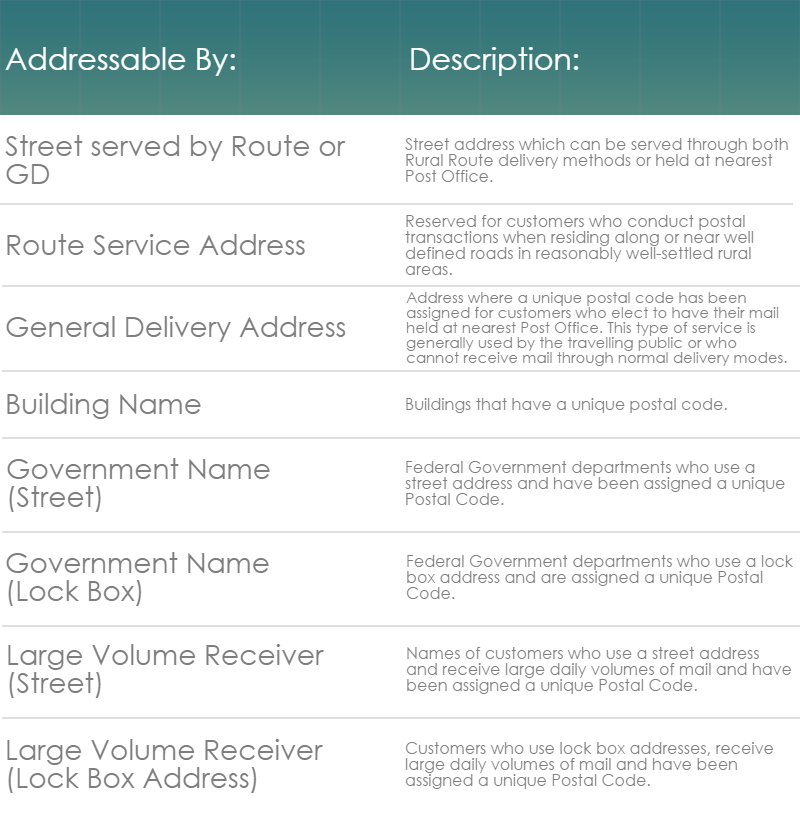Each year, over 140 million pieces of mail are marked as undeliverable. This happens for several reasons which include incorrect address format, address no longer exists, and mail refused by an addressee to name a few. This article seeks to clarify some of the most common questions regarding Canadian address types and proper formatting techniques to ensure the highest degree of deliverability.
Unit number formatting
There are three acceptable formats that are accepted by Canada Post. The first designation places the unit number ahead of civic number, separated by a hyphen in the Delivery line. The second designation places the unit number at the end of delivery line prepended by unit type. The third designation and least common places the unit number between the addressee and delivery line. See examples below:

Address casing
In general, most mail processing machines are designed for sorting addresses which are printed in upper case format. This differs however with the methods in which data is typically stored in Enterprise CRM systems, which usually prefer proper casing of address information for readability. The decision of which preferred format depends on the application, but for direct mail it is recommended to use all upper case.
Municipality name changes
There are instances where communities can amalgamate and customers continue to use the old name. This can present challenges to proper delivery of mail, which is referencing an older municipality name which may no longer exist, or be designated for an area outside of the current area. It is recommended to ensure the municipality name provided is most current for the address provided.
Address types
Address types that are serviced by Canada Post fall into two categories, civic addresses and postal installation type addresses. A civic address consists of a street address number, street name, municipality name and postal code. A postal installation address consists of the description of the type of delivery, which may be general delivery, lock box number or route service number, municipality, province and postal code. The table below provides a reference for how these address types are addressable by:

One of the simplest ways to ensure address accuracy is with our Canadian address validation service.












